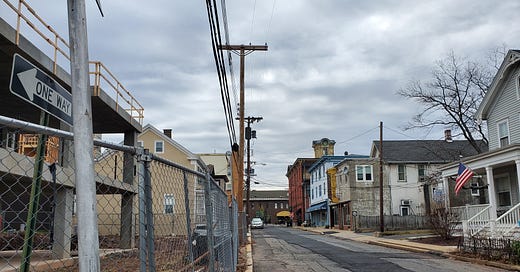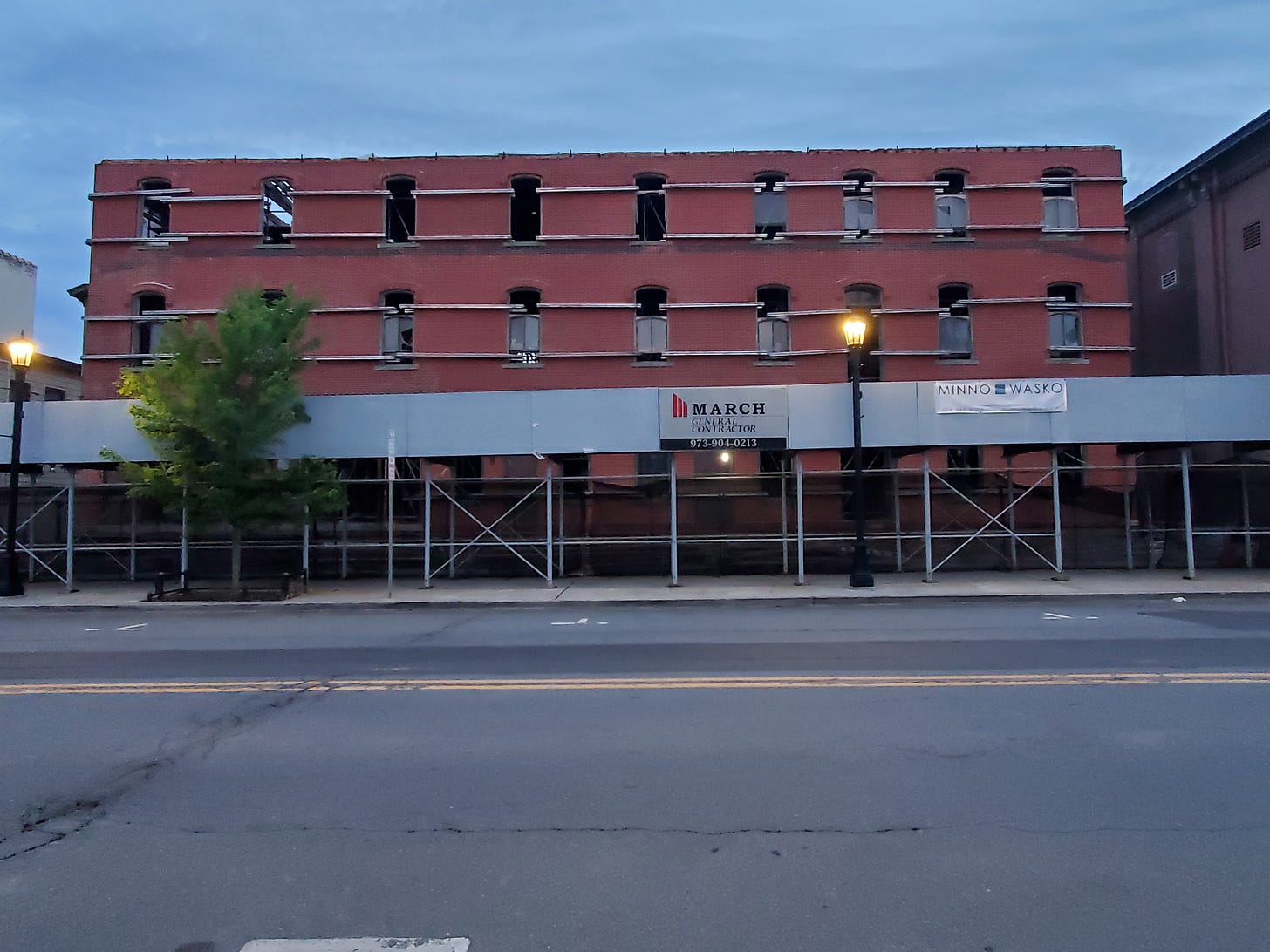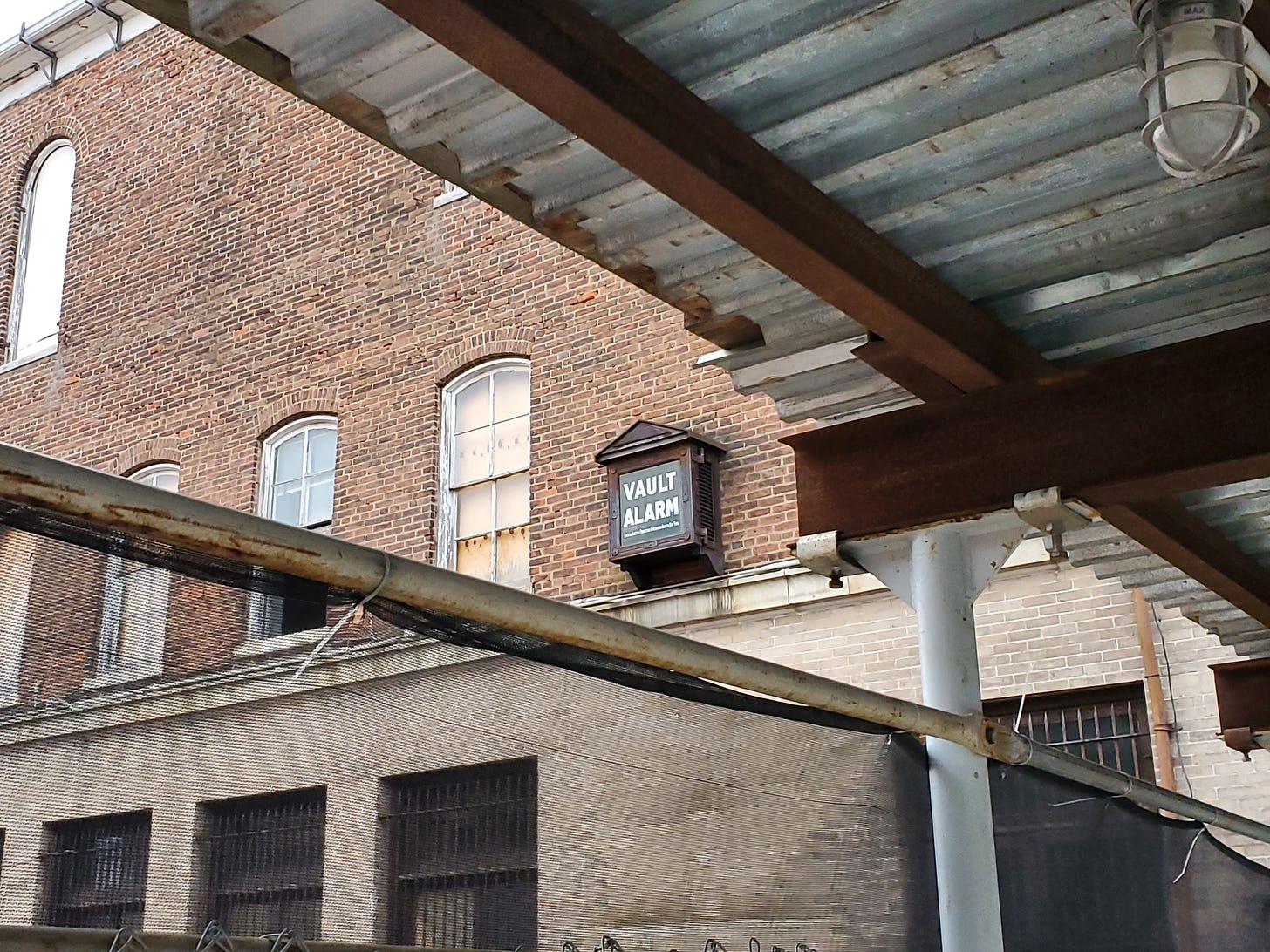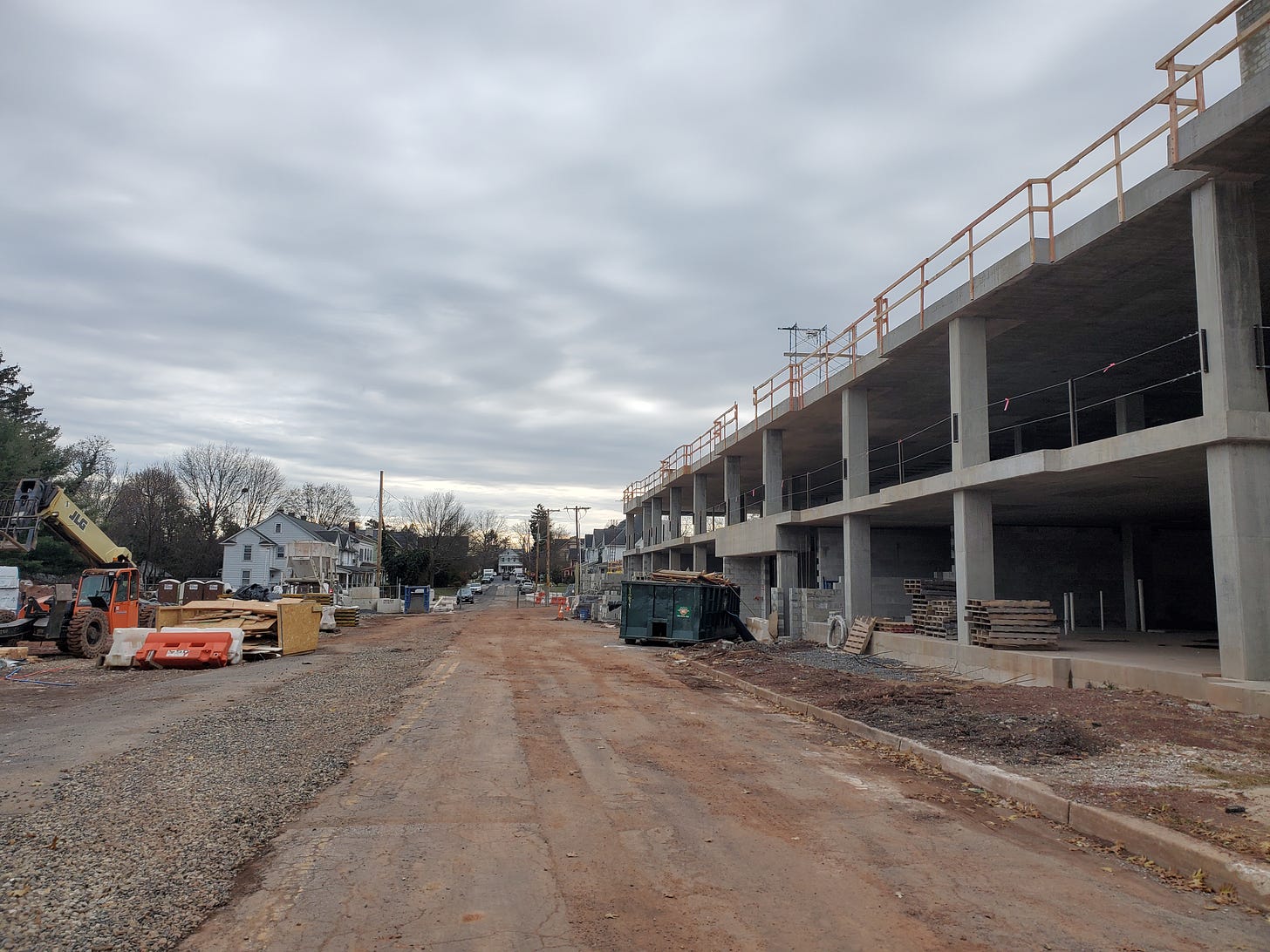I shot this brief video when I was in Flemington, New Jersey for Christmas:
This is the back portion of the big historic hotel restoration/expansion project on Main Street. The video is shot from an intersection facing the side/back. Here’s the front of the hotel:
You can understand why a project of this scale can feel disruptive to a small town—all the more so when hardly anything has been built in decades. It can feel like this doesn’t belong—doesn’t fit.
Would I want to be one of the homeowners in that photo above, facing a closed street and a loud construction site? Probably not.
But go back to that video at the top. Watch it, if you didn’t. That sound of construction noise is so exciting to me. It’s hard to put into words. It’s not just the excitement that something new, and hopefully interesting, is coming to this little town that I grew up visiting.
It’s something deeper than that. The feeling that this place which has barely changed in years and years—which you could mistake for a movie set or a town-themed subdivision, something built and done—is suddenly alive. I imagine some great creature thought dead suddenly groaning and creaking to life. Hearing construction noise in a place like this gives me a sense of hope.
It makes me think of the Christian idea of anamnesis: a Greek term that means, in this context, the bringing of the past into the present: the making present of a previous moment. Anamnesis underlies the Catholic (and some Protestant) doctrines of the Eucharist, i.e. that Christ and his sacrifice are not repeated in Holy Communion, but made present.
I get that feeling, in the secular world, when I see a new building going up in a small town. I don’t see the change from the present built form as much as the continuity with past construction—that the project of making this place hasn’t ended, that we are today invited to participate in the same project as the city fathers of the 19th century.
I often wonder whether the builders of Levittown, or the first strip plazas, or these Main Streets that are now designated “historic” and encased in amber, ever imagined that whatever they built would be the end. When we pretend that a place can be “done” or “full,” we are choosing an arbitrary moment in the long trajectory of a place to be final. Would those original builders have wanted that, if it had even occurred to them? I think most of them would instead have expressed something like, “Do this in memory of me.”
It’s that transformation from fossil, from artifact, from curious remnant, to living, breathing place that I feel when I look at that big noisy construction site in my little old town.
Related Reading:
Thank you for reading! Please consider upgrading to a paid subscription to help support this newsletter. You’ll get a weekly subscribers-only piece, plus full access to the archive: over 800 pieces and growing. And you’ll help ensure more like this!








Interesting analogy, but I'm more into cost benefit analysis. Possibly the homeowners in front of the new building will suffer a decline in their property values. If so they can be compensated, beyond the tax reduction on the devalued property. But they CAN be compensated because the new building generates new income, some of which will go the town in new taxes. It is a net gain even if not literally every ONE gains.